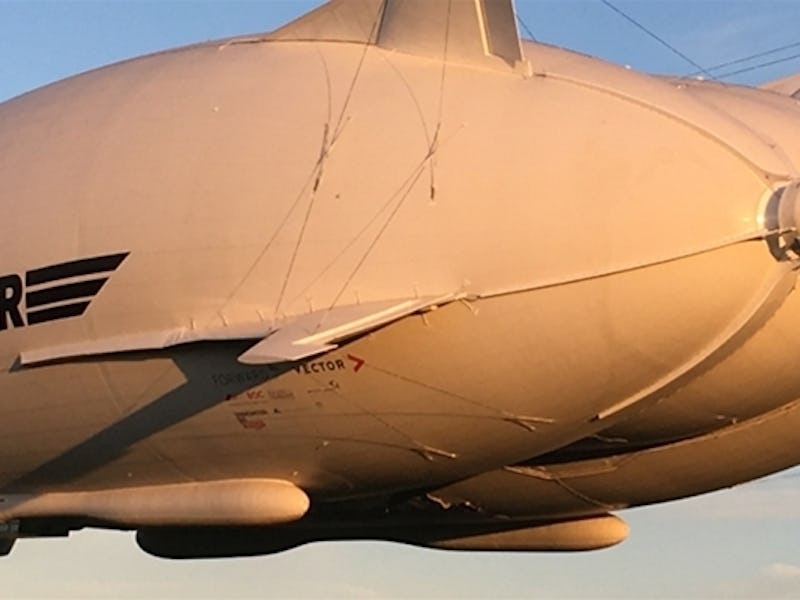The Airlander 10 flies again!
More than eight months after a slow-mo’ nose dive, the massive cloud- or butt-shaped airship created by Hybrid Air Vehicles completed its third successful test flight on Wednesday, above the rural fields 60 miles north of London. A future where these ships transport cargo and commuters high overhead is seemingly upon us.
The company announced that the helium-filled airship took off and landed safely, after its longest-ever flight time of three hours. The company announced the Airlander 10 completed all three objectives set for the test: 1. to conduct a full test flight, 2. to learn more about how it handles in the air, and 3. to collect various bits of performance data.
Notably, the ship’s newly added “landing feet” — the technical term is the Auxiliary Landing System — “performed as expected.” It’s notable because of the incident that happened last August.
The next test flight hasn’t been announced but Hybrid Air said that the “next few flights are likely to be at least a week or two apart, in order to give time for a full analysis of the data collected on the flight.”
The bulbous part of the ship is called the “envelope” and its 1.34 million cubed feet are filled with helium. The ship has four 325 horsepower, four-liter V8 engines. Imagine something like the engine in this 1969 Chevrolet Chevelle, multiplied by four. At 300 feet, the ship’s as long as an NFL football field and eight stories tall (85 feet). It’s 432 feet wide. Its makers say it could stay in the air for five days and would hit a crushing speed of 91 mph.
So what will it do? “It will fulfill a wide range of communication, cargo carrying, and survey roles in both the military and commercial sectors all with a significantly lower carbon footprint than other forms of air transport,” promises Hybrid Air.
Here’s a timeline of the Airlander 10’s three flights so far:
May 10, 2017: The Airlander 10 makes its third flight. Watch the highlights video below.
And here it is in-flight:
August 24, 2016: After a flight of 100 minutes, the Airlander 10 does a very slow nosedive, landing heavily on the cockpit on the lower-front of the aircraft.
This is the cockpit.
The official cause of the crash is because the mooring line used to dock the airship was far too long (155 feet instead of 50), and as the ship flew, it hung like a massive, loose shoelace, eventually snagging a power line, reported the BBC. The snag caused a chain reaction which caused a slow nose-dive.
August 18, 2016: The Airlander 10 successfully completes its first test flight, staying in the air for about 15 minutes. “It flew like a dream,” said chief test pilot Dave Burns.
Here’s a short film about that first flight:
Hybrid Air Vehicles sees the Airlander 10 as only the beginning, with illustrations on its website of the Airlander 50, capable of carrying 132,300 pounds, and launching in the mid-2020s. The Airlander 10 can carry 22,050 pounds.
